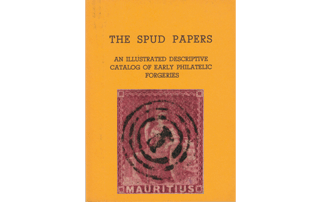Spud Papers – Sierra Leone



 Issue of 1872.
Issue of 1872.
It will be seen that the forgery annexed has no mean appearance, and is certainly calculated to deceive many. There is one thing that may be taken as an instant test, and that is,the white appearance of the profile from the top of the crown to the end of the nose; and again there is the same effect down the neck, which is unnatural and due to bad workmanship. The lozenges in the angles containing the cross, are mathematically true and perfect and all four alike in the real stamp, though not so in this forgery. But however we may pull its weak points to pieces, the whiteness of the profile remains the test; because the other points require comparison with an original; and when a forgery cannot be detected from its description alone, it is proof that the tests are not true. Of course, succeeding forgeries may render any description invalid; and the only way by which we can overcome the necessity for the wordiness of technical descriptions, is by studying our stamps, and becoming acquainted with their characteristics of paper and perforation. Whilst we are continually giving this advice, we cannot help wondering how it is that the miserable sameness of style, colour, paper, perforation, and obliteration, common to the weeds we preserve in this our herbarium, is not sufficient to enable a reader of one or two of these articles to detect the rubbish at sight. In common with the whole of its class, it is lithographed and without watermark, in lieu of being finely engraved and watermarked with the cc. and crown. The full set has been imitated:
- 1 p., lake
- 3 p., buff yellow
- 4 p., blue
- 1 sh., green
One peculiarity about the originals is, that they are all printed from one die, the values being stamped in afterwards, so that there i s frequently a discrepancy in the tints of the two printings. It is almost unnecessary to add that the forgeries are printed in the ordinary manner.
From “The Spud Papers” by Atless, Pemberton & Earée, 1871-1881.












Leave a Reply
Want to join the discussion?Feel free to contribute!